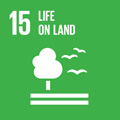- Docente: Giorgia Gri
- Credits: 5
- SSD: MED/04
- Language: Italian
- Teaching Mode: Traditional lectures
- Campus: Ravenna
- Corso: Single cycle degree programme (LMCU) in Medicine and Surgery (cod. 5708)
Learning outcomes
Upon completion of the course the student:
- knows the mechanisms that lead genomic alterations to cause disease; is familiar with the tumor phenotype, etiopathogenesis, and natural history of neoplasms from a perspective of prevention and innovative preclinical approaches suitable for the control of neoplastic disease;
- is able to apply knowledge of basic mechanisms of pathogenesis to specific diseases.
Course contents
The Molecular Pathology course consists of a part of Genetic Pathology (2 credits) and a part of Oncology (3 credits). The following syllabus refers to the entire course.
GENETIC PATHOLOGY
Types and causes of mutation and their pathogenetic effects. Mode of transmission of autosomal dominant and recessive and X-linked diseases. Hints on multifactorial and mitochondrial diseases. Mechanisms of repair of genotoxic damage: Base-Excision Repair (BER), Nucleotide-Excision Repair (NER), mismatch repair (MMR), homologous recombination (HR), Non Homologous End Joining" (NHEJ). Diseases with classical Mendelian transmission: hereditary renal cystic diseases, familial hypercholesterolemia, osteogenesis imperfecta, sickle cell anemia, cystic fibrosis, Duchenne and Becker muscular dystrophies, lysosomal storage diseases (hint) and Tay-Sachs disease, and hint on chromosomal aberrations: Del22q11.2 syndrome.
Epigenetic and posttranscriptional mechanisms of gene expression control: parental imprinting, Prader-Willi and Angelman syndromes. Sequence expansion diseases: fragile X syndrome, Huntington's chorea. Molecular investigation techniques. Hereditary neoplastic syndromes. "Gatekeeper" and "Caretaker" genes. Alterations of "gatekeeper" genes. Retinoblastoma: Knudson paradigm and subsequent reinterpretations. Role of the Rb protein. Hereditary polyposis colon cancer: role of APC protein. Gastric cancer and role of E-cadherin in epithelial-mesenchymal transition. Loss of heterozygosity (LOH). The von Hippel Lindau and mechanisms of hypoxia detection. Alterations in "caretaker" genes. The role of ATM and p53 genes. Xeroderma pigmentosum, ataxia telangectasia, hereditary forms of breast cancer, Li-Fraumeni, hereditary nonpolyposis colon cancer. Alterations in the stability of microsatellite sequences. Neoplastic syndromes from oncogene mutations: multiple endocrine neoplasms (MEN).
ONCOLOGY
Neoplasms: definitions and classifications. Basic oncology and medical oncology. Epidemiology of human cancers. Benign and malignant tumors. Cancer as a gene disease. Primary, secondary, and tertiary prevention of cancers.
Pathogenesis of tumors: oncogenes and oncosuppressor genes.
Genetic predisposition. Causes of cancer: biological and molecular mechanisms of physical, chemical and carcinogenesis by biological agents. The cancer phenotype: growth, differentiation, cell death, genomic instability. Morphological and metabolic characteristics of tumors and the tumor microenvironment. Evolution of neoplasms: clonality, heterogeneity and progression. Angiogenesis and metastasis. Tumor-host interaction: the immune response and systemic alterations.
Basics of cancer therapy. Fundamentals and molecular and biological mechanisms of radiation, pharmacological, biological, immunological and gene therapies of tumors.
Readings/Bibliography
Pdf files of lectures
Recommended
V. Kumar, A.K. Abbas, J.C. Aster. “Robbins & Cotran Pathologic Basis of Disease”, 10th edition, Elsevier
Consultation
R.A. Weinberg “The Biology of Cancer”, 2nd Edition. Garland Science
P.L. Lollini “Cellular and molecular oncology” Elsevier
R.Rubin; D.S. Strayer; E. Rubin “Rubin's Pathology: Clinicopathologic Foundations of Medicine”, 6th ed. Lippincott Williams & Wilkins
Teaching methods
Molecular Pathology courses consist of 5 CFUs - 40 hours of lectures supported by power point slides
Assessment methods
The end-of-course written exam aims to assess the student's achievement of the teaching objectives and thus knowledge of the main concepts of genetic pathology and molecular oncology. The purpose of the test is to verify the student's ability to apply his or her notional background and to make the necessary logical-deductive connections.
The final grade for the Integrated Course in Immunology and Molecular Pathology consists of the synthesis of the final evaluations of the different courses that comprise it. The evaluations obtained in the different tests do not have validity deadlines and are integrated to obtain the final exam grade.
The grade is expressed in thirtieths, on the average of the grades, weighted on the credits, given in specific questions on topics related to the main objectives of the Integrated Course, consisting of three teachings: Immunology (5 CFU), Genetic Pathology and Oncology (5 CFU), for a combined total of 10 CFU. The exam is passed if a grade of not less than 18 is obtained in each teaching.
Meaning of final grade:
Insufficient: deficient preparation. Serious and repeated conceptual errors.
18-19: knowledge of basic concepts without serious deficiencies. Exposition of concepts and language overall acceptable.
20-24: knowledge of basic concepts without gaps. Ability to analyze and connect in partial independence. Exposition of concepts and language fair.
25-29: good or very good level of preparation or even very good preparation but with inaccuracies in exposition that compromise the achievement of the full grade. Ability to analyze and link independently. Exposition of concepts in the right sequence and mastery of language.
30-30L: full, well-established preparation without inaccuracies on the topics covered in the course. Ability to frame the topic readily. Ability to analyze and link independently. Concepts in the right sequence and full command of specific language.
Teaching tools
Lecture materials used in class are made available to the student in electronic format on the Virtual Learning website [https://virtuale.unibo.it/].
You must register for the course with your institutional credentials.
Office hours
See the website of Giorgia Gri
SDGs



This teaching activity contributes to the achievement of the Sustainable Development Goals of the UN 2030 Agenda.
